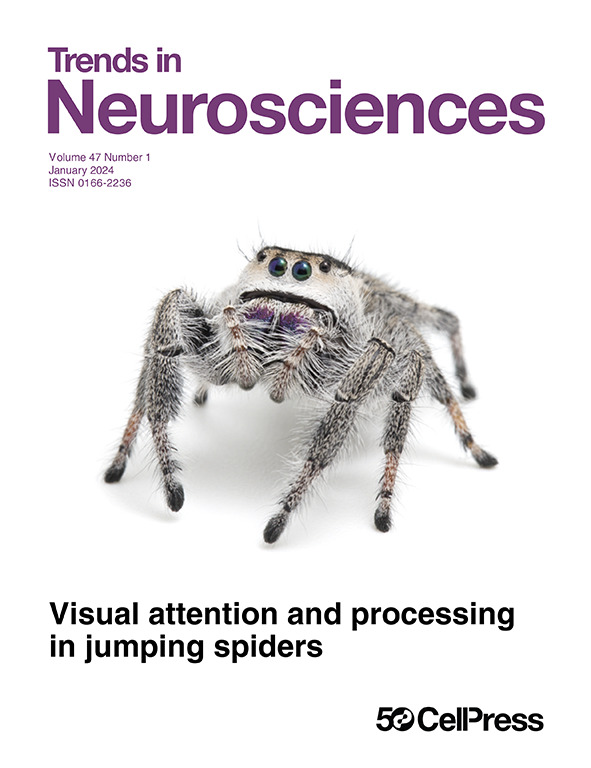创伤记忆所依赖的海马-皮层动态内涵。
IF 14.6
1区 医学
Q1 NEUROSCIENCES
引用次数: 0
摘要
在最近的一项研究中,克兰西等人阐明了海马体(HC)的活动模式与与创伤相关侵入性记忆(TR-IMs)相关的更广泛的功能连接网络之间的联系。这种神经现象学方法将海马区置于一个更大的神经框架中,并对 TR-IMs 不同特征的神经生物学基础进行了细致入微的探索。本文章由计算机程序翻译,如有差异,请以英文原文为准。
Contextualized hippocampal-cortical dynamics underlying traumatic memory.
In a recent study, Clancy et al. elucidate a connection between activity patterns of the hippocampus (HC) and the broader functional connectivity networks associated with trauma-related intrusive memories (TR-IMs). This neurophenomenological methodology situates the HC within a larger neural framework and provides a nuanced exploration of the neurobiological underpinnings of distinct characteristics of TR-IMs.
求助全文
通过发布文献求助,成功后即可免费获取论文全文。
去求助
来源期刊

Trends in Neurosciences
医学-神经科学
CiteScore
26.50
自引率
1.30%
发文量
123
审稿时长
6-12 weeks
期刊介绍:
For over four decades, Trends in Neurosciences (TINS) has been a prominent source of inspiring reviews and commentaries across all disciplines of neuroscience. TINS is a monthly, peer-reviewed journal, and its articles are curated by the Editor and authored by leading researchers in their respective fields. The journal communicates exciting advances in brain research, serves as a voice for the global neuroscience community, and highlights the contribution of neuroscientific research to medicine and society.
 求助内容:
求助内容: 应助结果提醒方式:
应助结果提醒方式:


